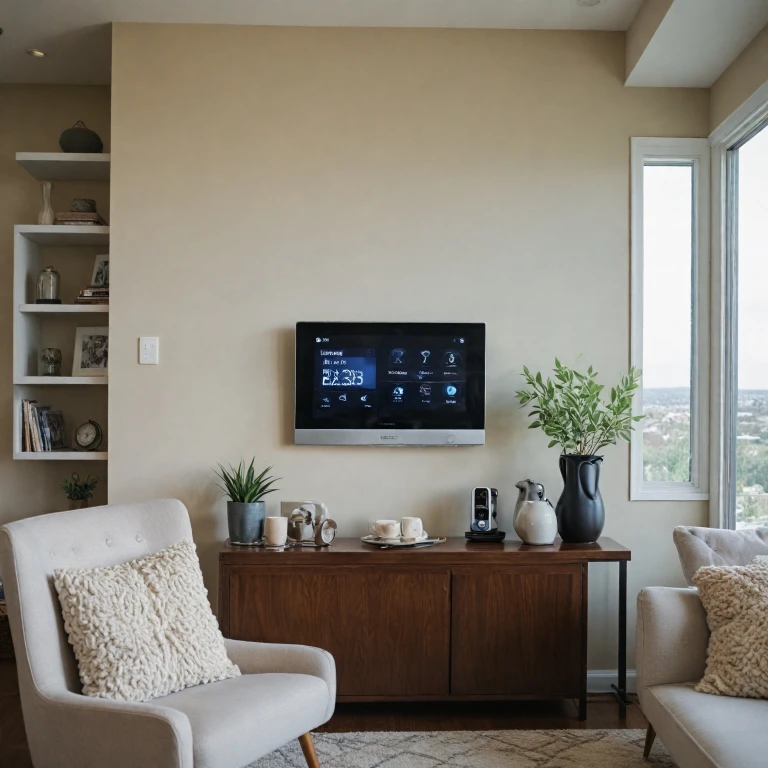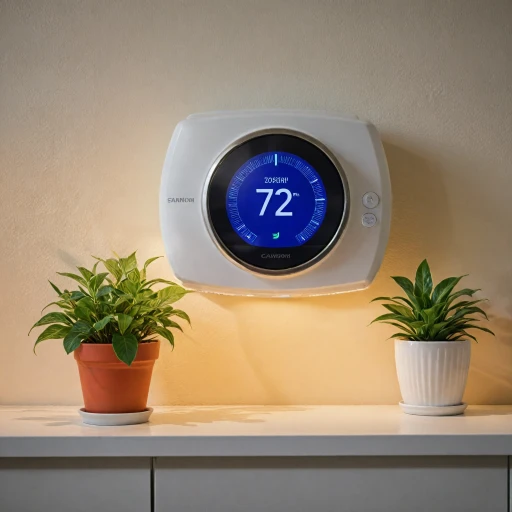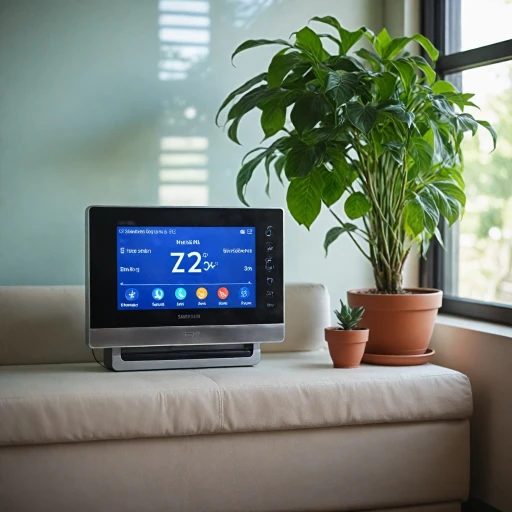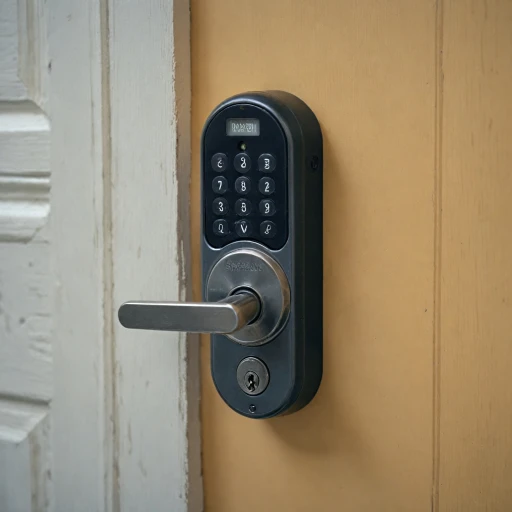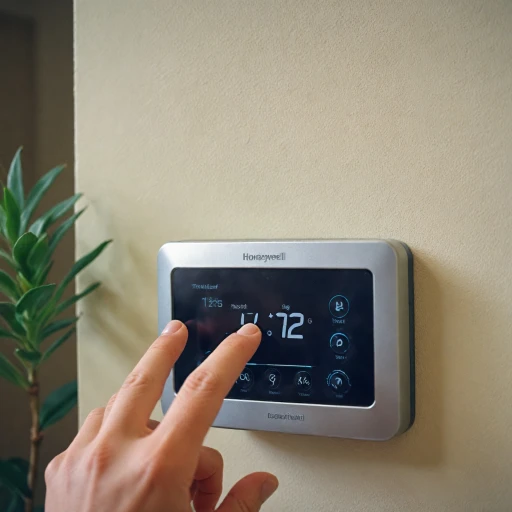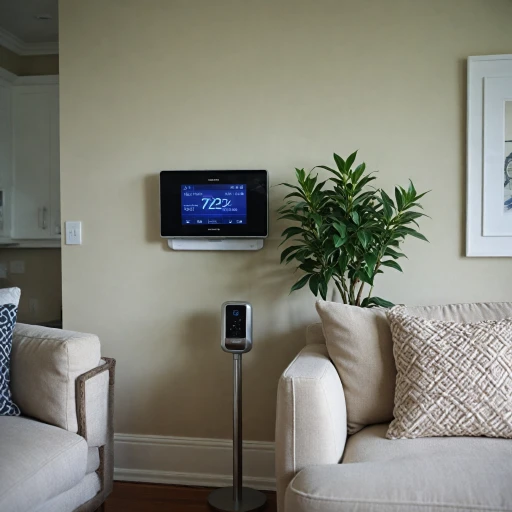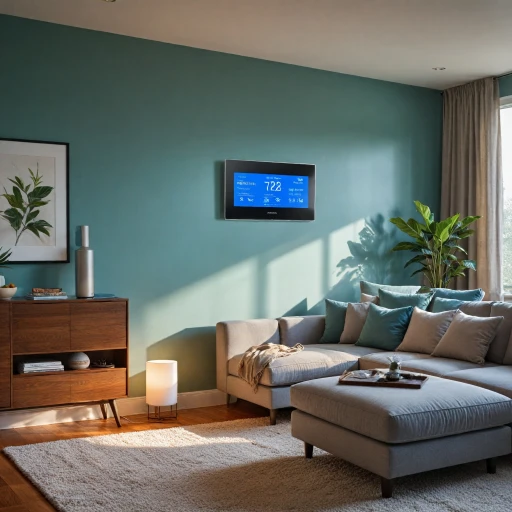
Understanding Thermostats with Remote Sensors
Delving into the World of Modern Thermostats
Thermostats have come a long way from their basic beginnings, evolving into integral components of smart homes. At the forefront of this smart evolution are thermostats with remote sensors. These innovative products are designed to offer precise temperature control across various rooms, ensuring each space in your home is comfortable and energy-efficient. Traditional thermostats typically measure temperature in one location—often where the thermostat is mounted—which can lead to inconsistent comfort levels in different rooms. Here is where remote sensors play a pivotal role. By placing these sensors in various indoor spaces, you'll be better equipped to maintain uniform temperatures throughout your home, a key feature in enhancing home comfort.Key Features of Thermostats with Remote Sensors
Understanding how these smart devices work is essential when considering their integration into your living spaces. Remote sensors communicate with the main thermostat to provide:- Precise Temperature Control: With sensors strategically placed in different rooms, it ensures that each area's temperature is accurately monitored, allowing for adjustments that enhance both comfort and efficiency.
- Optimized Energy Use: Utilizing temperature data from multiple sources within your home allows these smart devices to make informed heating and cooling decisions, leading to noticeable energy savings.
- Smart Compatibility: Many models, such as those from Honeywell and ecobee, seamlessly integrate with existing smart home systems, providing a cohesive and connected experience.
Benefits of Using Remote Sensors in Smart Thermostats
Advantages of Remote Sensors in Smart Thermostats
Smart thermostats with remote sensors offer several features that are beneficial for maintaining an energy-efficient and comfortable home environment. By placing remote sensors in different rooms, these devices provide a more comprehensive view of your home's temperature, which helps in achieving optimal comfort throughout your living space. Here are some notable advantages:- Enhanced Temperature Control: Remote sensors monitor the temperature in various locations within your home, ensuring that the thermostat responds to the actual conditions where you spend the most time. This leads to more balanced heating and cooling, which is especially useful in homes with varying temperatures across rooms.
- Improved Energy Management: By better understanding the temperature needs of each area, remote sensors contribute to significant energy savings. They can prompt the heating or cooling system to operate only when necessary, thus reducing unnecessary energy consumption.
- Increased Indoor Comfort: The sensors enable the thermostat to adjust the temperature based on where people are located, thereby optimizing comfort as you move from one room to another. This feature is particularly advantageous in larger homes or spaces with inconsistent temperatures.
- Smart Home Compatibility: Many smart thermostats with sensors, such as the Ecobee and Honeywell smart models, can integrate seamlessly with other smart home devices, enhancing your home's automation capabilities. Integration with systems like Google Home or Amazon Alexa can further streamline control.
- Learning Capabilities: Certain products, like the Nest Learning thermostat, utilize data from sensors to learn your preferences and adjust settings automatically over time. This leads to a more personalized climate management experience.
Installation and Setup Tips for Optimal Performance
Setting Up for Maximum Comfort and Efficiency
Embarking on the journey of installing a smart thermostat with remote sensors requires understanding a few crucial steps that ensure optimal performance and comfort. A practical approach blends the latest home technology with savvy placement and configuration, leveraging features that promise energy savings and enhanced climate control.
When it comes to installing these devices, key considerations must be taken into account. Strategically situate your remote sensors in areas that accurately reflect your home's typical temperature variations—often areas like bedrooms and main living spaces. Be wary of placing sensors in corners or near windows where drafts can skew results.
Read the product manuals provided by manufacturers such as Honeywell or Ecobee, which often offer detailed installation guides. They may include insights on pairing your wireless sensors to the main thermostat control, ensuring seamless communication within your heating and cooling system. Proper calibration post-installation is crucial as it aligns your thermostat with the real-time readings from the sensors, maintaining the right temperature across all rooms.
Many smart thermostats provide app-based control that simplifies the initial setup, allowing you to customize schedules that cater to your daily routine. These apps frequently update, expanding their functionality and augmenting how you interact with your home heating system over time.
Customer reviews can be valuable here as they often point to specific challenges encountered during setup, especially concerning wiring compatibility and syncing issues with the sensors. Reviews might also highlight the collaborative efficiency between your thermostat product and existing smart home systems.
By following these steps, your home can quickly become a hub of comfort, ensuring that every room is at your preferred temperature throughout the day while maximizing energy savings.
For more detailed insights on enhancing home comfort with remote sensing thermostats, this article provides additional information and guidance.
Comparing Popular Thermostat Models with Remote Sensors
Exploring Top Smart Thermostats with Remote Sensors
When evaluating smart thermostats, including models featuring remote sensors, several well-regarded options stand out in both performance and customer satisfaction. Understanding the variations and features of these products can help you make an informed decision.- Ecobee SmartThermostat: A popular choice, the Ecobee is known for its responsive temperature sensor capabilities, which help manage indoor environment efficiently. Customers appreciate its straightforward integration with Wi-Fi and compatibility with voice control systems. It stands out for its ability to enhance comfort in the smart room by adjusting based on activity and time.
- Nest Learning Thermostat: This learning thermostat excels in adaptability. It not only remembers your settings to deliver energy savings but also works with remote sensors to offer precise room-based control. Reviews consistently highlight its ease of use and design aesthetics as significant benefits.
- Honeywell Home T9: Incorporating a temperature sensor and smart technology, the Honeywell T9 ensures each room within your home receives the perfect balance of heating and cooling. Its intuitive use of remote sensors to identify occupancy and room conditions helps to maximize comfort and energy efficiency.
Key Features to Consider
When choosing a smart thermostat with remote sensors, look for products offering:- Comprehensive Control: The ability to manage multiple zones or rooms accurately.
- Integration with Smart Home Systems: Compatibility with existing smart home solutions, like Alexa or Google Assistant.
- Customer Reviews: Positive feedback regarding energy savings and user experience.
- Adaptive Learning Capabilities: Thermostats like Nest adapt settings based on patterns to save energy.
Integrating Remote Sensor Thermostats with Smart Home Systems
Seamless Integration of Remote Sensor Thermostats with Smart Homes
In today’s era of interconnected homes, integrating your smart thermostat with remote sensors into a broader smart home system is both beneficial and straightforward. Whether you have a complex setup or a simple smart home, the process can be seamless, resulting in enhanced control over your indoor environment and significant energy savings. First, consider the compatibility of your smart thermostat. Most modern smart thermostats, such as those from well-known brands, come with built-in compatibility for various smart home platforms like Alexa, Google Assistant, or Apple HomeKit. Check the specific model’s product features to ensure it integrates smoothly with your existing devices. This integration allows for voice-controlled adjustments and handoffs between smart devices, truly making your home smarter. Next, to maximize comfort and energy efficiency, the placement of remote sensors in the room is crucial. Smart room sensors work with thermostats to provide more accurate readings of the indoor temperature across different areas. When strategically positioned, these sensors ensure that the desired comfort level is maintained throughout various parts of your home without unnecessary energy consumption. Additionally, to enhance your setup, you can link your smart thermostat with other smart home products, like lighting or security systems, which can optimize overall energy usage. For instance, the ecobee thermostat with sensors can be integrated with smart light controls to adjust lighting based on occupancy, further contributing to energy savings and comfort. Finally, user feedback and customer reviews suggest that a central hub or app to manage all smart devices, including thermostats, could simplify control. This approach ensures that all devices communicate effectively, offering a seamless user experience and comprehensive indoor comfort. By maintaining a network where your home appliances work in harmony, you can create an environment that adapts not only to your preferences but also contributes to energy efficiency and ultimately, financial savings.Troubleshooting Common Issues with Remote Sensor Thermostats
Addressing Common Challenges with Remote Sensor Thermostats
Even with the advanced features offered by smart thermostats equipped with remote sensors, users might encounter some recurring issues that can affect the product's performance and customer satisfaction. Identifying these problems and understanding the basics of troubleshooting can significantly enhance your indoor comfort and energy efficiency.- Connectivity Problems: A prevalent issue with smart thermostats involves connectivity with either your Wi-Fi network or the sensors themselves. Ensuring that your thermostat's software is up-to-date can often resolve these issues. Check for software updates in the product reviews or manufacturer's guidelines to ensure you are benefiting from the newest features.
- Inaccurate Temperature Readings: Discrepancies in temperature readings between your thermostat and the remote sensors can affect the temperature control of your home. Verify that your sensors are placed in optimal locations, avoiding areas with extreme temperature fluctuations like near windows or heating/cooling vents.
- Sensor Placement: To harness the full potential of remote sensors, correct installation is key. Follow the installation and setup tips provided by smart thermostat manufacturers like Honeywell or ecobee to find ideal spots for sensor placement that will provide consistent room comfort and energy savings.
- Integration Issues: If your system integrates with other smart home devices, ensure compatibility across platforms. Some thermostats with remote sensors might require specific configurations to work with smart home systems. Double-check compatibility listings and customer reviews for insights on integrating your, for example, Nest Learning Thermostat with other home automation products.
- Power Supply and Wiring: Occasionally, issues can arise from the thermostat's power supply or sensor wire connections. Regularly inspect the wire connections to ensure proper contact, as a misaligned wire can disrupt sensor communication and energy efficient heating and cooling operations.
